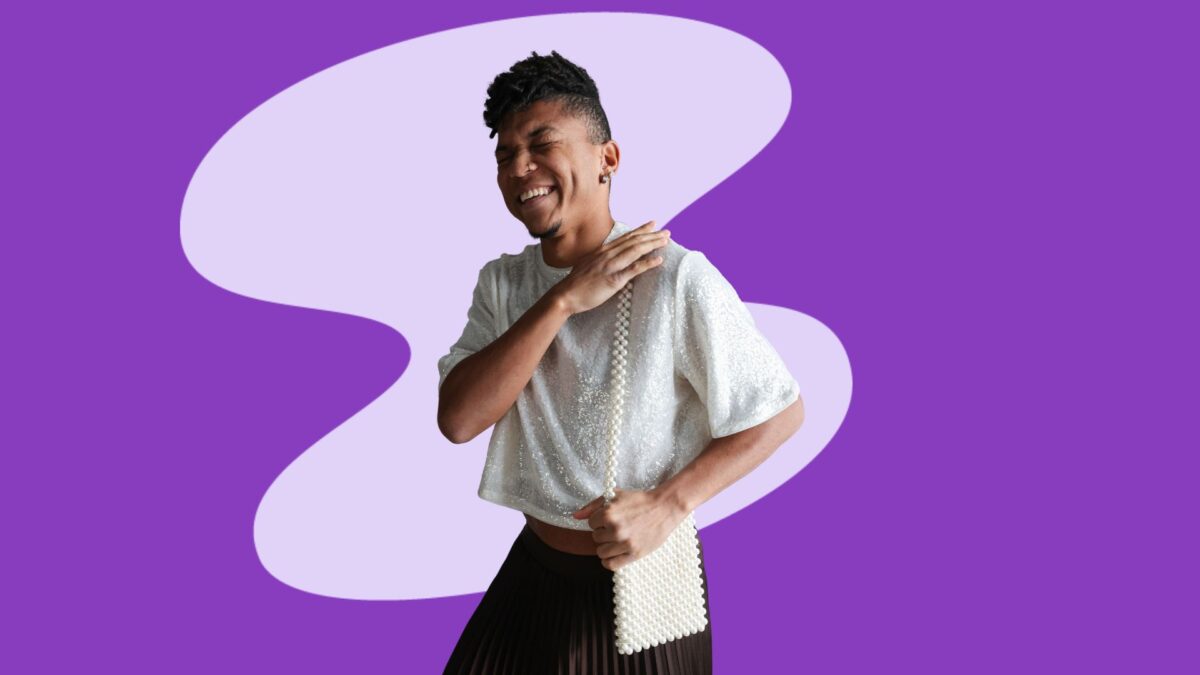The year is wrapping up, and now’s the time for those new year goals!! You might be thinking about all of the big and beautiful ways you want to change in the coming year before the countdown to midnight is even done. But are these new year’s resolutions mindful??
We’re all about the “new year new me” vibe, but you should make sure you’re not putting yourself down or being pushed into setting certain goals by toxic mindsets. Your 2023 goals should be more about taking care of your wellbeing rather than focusing on changing something that’s “wrong.”
We want to help you think about what it means to make good new year resolutions while taking care of yourself and your mental health. So here’s 6 ways to set mindful new year goals!
1. Write Out Your Goals
What are your goals, anyway??
It’s very possible that you made it to this article looking for a list of positive goals you can set. Which is great! Welcome, get comfy, get settled, and let’s talk. Truth is, no one can set mindful goals for yourself but you.
Which is a lot less convenient than someone giving you a list, we know. But would that even be helpful?? The best resolutions have your own interests in mind. If you love being a homebody, then would setting a 2023 goal to buy a camper van and live life on the road make sense? Alternatively, if you loooooovvveee going on adventures and want to make it a big part of your year, someone else telling you to ditch that resolution wouldn’t be great, either. Only you know what’s best for you.
That’s why we recommend journaling through your 2023 goals. It’s a really great way to check in with yourself and see what you want, without the outside influence. A helpful exercise you can do is to write out your goals, explain why you set them, and how they serve you. Try to ignore what everyone else suggests and focus on yourself. Do you really want to get into hiking, or are you doing it because your granola friend has been bugging you to go with them?
There’s no harm in challenging yourself—it’s actually pretty vital to grow—but ask how and why you’re challenging yourself with your goals, and if it’s in the way you want to be challenged. Not everyone wants to scale a mountain, and that’s okay.
The DiveThru app has hundreds of journaling prompts, if you want to get more into journaling. Which you should. Because journaling is pretty great. Check it oooouuttt.
2. Use Mindfulness to Check In with Yourself
Mindfulness is a really great way to slow down your everyday life. Okay, you can’t actually slow down time with mindfulness (we wish!). It’s more of a way to slow down your racing, anxious and stressed out thoughts to ground yourself in the present moment.
This will be super helpful while making goals for 2023. You’ll want to approach the new year with a centered mind in order to set goals that serve you well. This is true especiallyyyy if you’re the ambitious type that will set astronomical goals and then push yourself to work super hard all the time, to the point of burnout. Let’s skip the burnout in 2023! One of those goals could include “introduce ways to practice mindfulness every day” — it’s much easier to implement than you’d expect! Check out Dr. Justin Puder’s 14 Day Mindfulness Practice in the DiveThru app to get started. He’ll go through two weeks of mindfulness exercises to get you into the habit!
Use mindfulness to help you approach your goals with less stress and anxiety than you would without it. Clear mind = clear goals!
3. Challenge Diet Culture Resolutions
Every year, soooo many people set diet and exercise goals for themselves that lead to disappointment and kill self-confidence. They shell out money on juicers, diet plans, and gym memberships without really checking in with themselves first. So before you go and force a change in lifestyle, ask yourself: who told you that you need to change? And is this change serving you or damaging you?
We’re all for mindful movement and nutrition at DiveThru. You should take care of yourself, and those things are part of a balanced lifestyle! But we’re pretty tired of toxic diet culture and its insistence on very specific, unrealistic, and often unattainable body types as being the pinnacle of health.
You shouldn’t dread movement. When you choose an activity that you genuinely enjoy, you’ll be excited to go back to it, which makes all the difference! If a dance class would get you pumped to move, or kickboxing, swimming, cycling, or yoga, pick one (or more) of those! Movement should bring joy, not shame or guilt.
And when it comes to nutrition, it’s a lot more complicated than cutting out certain foods and eating “healthy” things. In fact, cutting out foods is unrealistic, and sets a negative mindset around food that can become toxic very quickly. Try intuitive eating in 2023 if you want to modify your eating habits. What food gives you energy, and what drains you? What food makes you feel good, and what doesn’t? Listening to your body’s cues is a great way to approach nutrition in the new year.
If you struggle with disordered eating or eating disorders, intuitive eating won’t be a realistic goal for you to set just yet. Seeing a therapist will be an important first step instead. Having someone helping you on this journey can truly make a difference.
4. Set SMART Goals
SMART goals are all about setting goals that you can actually achieve. If you set a massive goal that you won’t ever reach, or set a goal that’s unrealistic to achieve in the timeframe you gave yourself, then you’ll get discouraged when you fall short of your goals.
SMART is a fun little acronym that is explained by Paul J. Meyer in his book “Attitude Is Everything: If You Want to Succeed Above and Beyond.” SMART breaks down goals into five parameters:
- Specific: your goal is ultra-specific and clear.
- Measurable: there’s a way to track the progress of your goal.
- Achievable: you’re able to complete your goal.
- Relevant: your goal matters to you and makes sense with your life.
- Time-bound: your goal has an end date to work towards.
If you go into 2023 with a resolution to “read more,” then it’s not going to pan out. What do you want to read more of? How much more? When will you know you’ve finished your goal? How much time do you realistically have available in your day to read?
A SMART version of that goal could be to read 20 nonfiction books this year, completing at least 5 books every three months. That way, you can do three-month check-ins on your goal, focus on nonfiction as a genre, and know when you put down book 20 that you’ve completed your goal. It’s a lot clearer than “read more” and helps you set guidelines for what you want to do!
5. Practice Gratitude
Resolutions are always about aiming for things we don’t have or don’t do. We make goals to be more active, save money, read more, do more, have more, be more. But why don’t we make goals to appreciate where we are now?
Practicing gratitude is a fantastic way to reflect positively on your current circumstances. This isn’t toxic positivity—if your life sucks right now, it’s allowed to suck, and you’re allowed to feel like it sucks. Practicing gratitude is more about finding the little things to be thankful for everyday to build a more confident, self-assured mindset. Let those sucky days suck, but you can learn to appreciate the ones that don’t suck that much more.
Setting a resolution to build gratitude, along with all your other goals, is a great way to remind yourself of how dope you already are while reaching for things you want to achieve.
6. Turn to Self-Compassion
Mindful resolutions are less about the actual resolution and more about the feelings and reasoning behind them. Toxic resolutions are all about what you aren’t, what you lack, and what you “should” be. Mindful resolutions focus on how you can best take care of yourself, while reaching for your (SMART) goals, to live a life that makes you happy and satisfied. Keeping that in mind, a big part of mindful resolutions will be self-compassion.
This year, we are SO done with punishing ourselves over new year goals. By approaching them with self-compassion, we allow ourselves to set realistic goals that align with a hopeful vision of our future. Slip-ups are okay. No one is a perfect goal-accomplishing machine, and a misstep doesn’t mean you’ve failed. As long as you’re taking care of yourself while working towards something you want, at a pace that works for you, you’re absolutely nailing your mindful resolutions.










